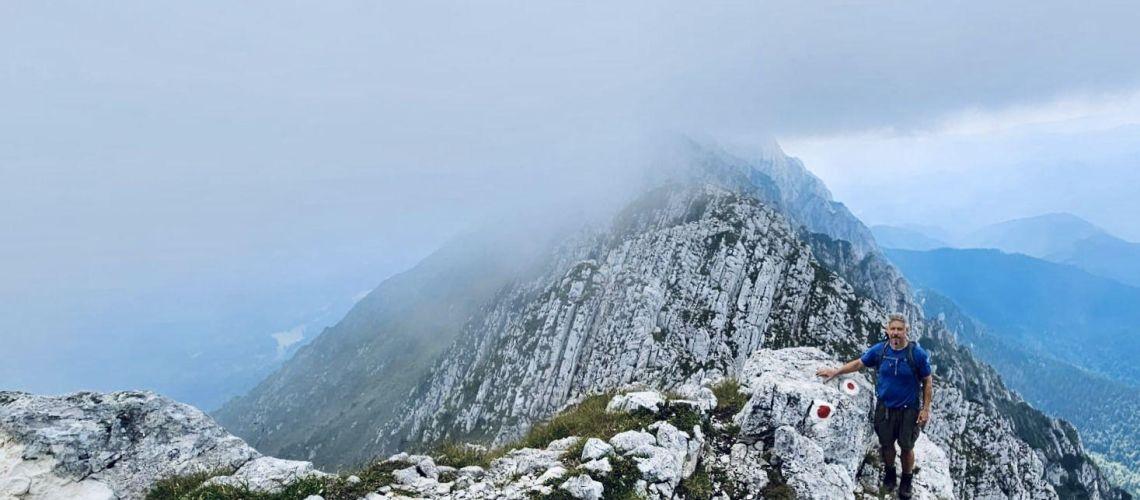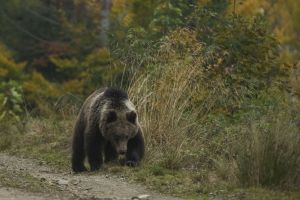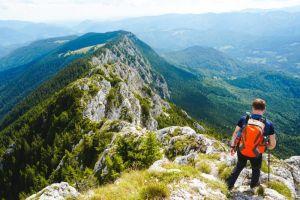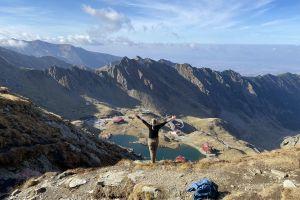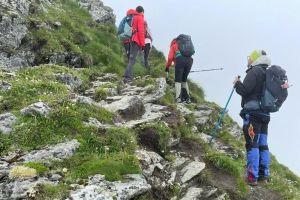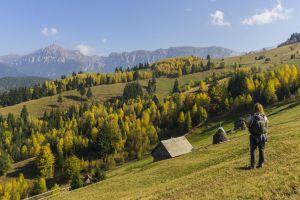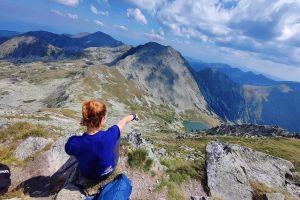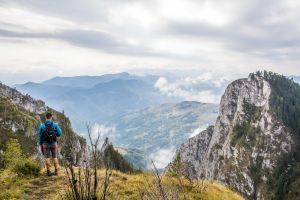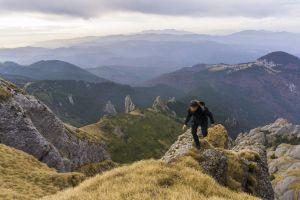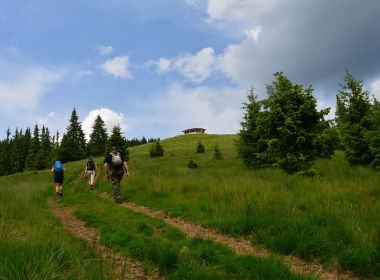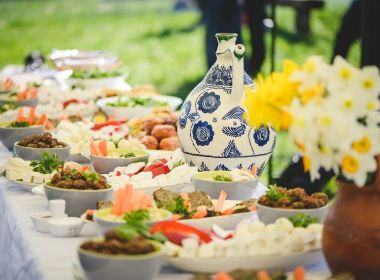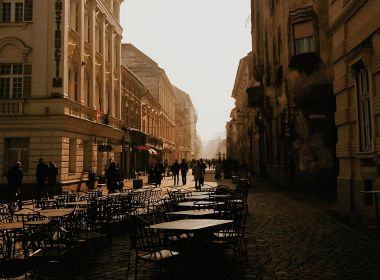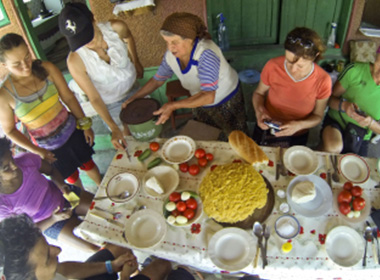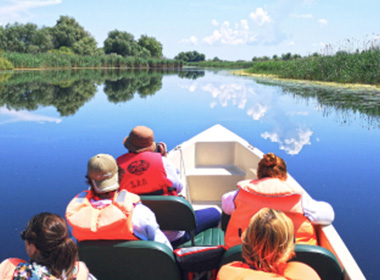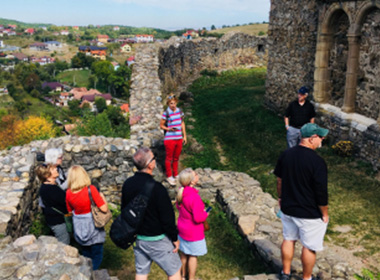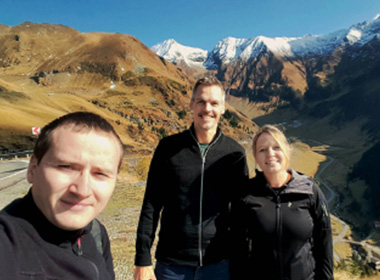Ask any Romanian about their favorite thing in our country, and most will mention the breathtaking scenery and natural beauty of the Carpathian mountain range.
No wonder! Romania’s Carpathians cover nearly 55% of the country. This is the largest and highest mountain range in Eastern Europe, mostly lying within our borders and often called the Transylvanian Alps.
Beyond the stunning 2,000m (6,500 ft) peaks, the Romanian Carpathians offer remarkable natural attractions, numerous wildlife-rich national parks (including Europe’s largest bear population), and traditional villages with fortified churches.
Here you can enjoy everything from bird-watching, horse riding, and mountain biking to hiking, climbing, and rafting. There’s something for everyone, yet Romania remains an under-the-radar destination, and many people still haven’t heard of the Carpathian Mountains or their astonishing size, beauty, and adventure potential.
That’s until they visit Romania for the first time, travel from flat Bucharest to the tourist town of Brasov and see the impressive 2,200m high Bucegi Mountains towering above! Seeing those awe-struck faces against the car’s windows is priceless for us :)
What makes things even harder is that the Romanian Carpathians are still incredibly wild, with underdeveloped tourist infrastructure, so exploring their alpine meadows dotted with flowers and natural beauty safely can be difficult even for locals.
For foreign visitors, it’s even tougher: reliable information is scarce, expectations are unclear, and hiking alone can be risky.
Since 2017, as a local company, we’ve helped thousands of travelers discover Romania’s natural beauty through safe hiking trips and wildlife tours led by certified, passionate, and friendly guides.
So in this article we’ll going to give you more info about the Carpathian Mountains and:
- a breakdown of this huge chain of mountains and its most popular subgroups
- the best place to go for beautiful one-day hikes or a multi-day trek
- the best time to do it and weather conditions
If you’re looking for more in-depth info about planning your hiking trip, trails and how to stay safe in the Romanian Carpathians full of bears, check our dedicated guide for hiking in Romania.
This article will give you a brief overview of the most popular mountain ranges in the Romanian Carpathians and what makes each of them special:
Table of contents
- General information about the Romanian Carpathian Mountains
- The Western Carpathians
- The Southern Carpathians
- The Eastern Carpathians
- What to expect in the Romanian Carpathians
- 1. The Romanian Carpathians are very wild*
- 2. Tourist hiking infrastructure is underdeveloped*
- 3. You can’t do hut-to-hut hiking in Romania*
- 4. Best time to go in the Romanian Carpathians*
- Fagaras Mountains
- Highest peaks in Fagaras Mountains (also Romania's highest peaks)
- Bucegi Mountains
- Highest peak in Bucegi Mountains
- Piatra Craiului Mountains
- Highest peak in Piatra Craiului National Park
- Retezat Mountains
- Highest peak in Retezat Mountains
- Apuseni National Park
- Highest peak in Apuseni National Park
- Ceahlau Mountains
- Highest peak in Ceahlau Mountains
- Ciucas Mountains
- Highest peak in Ciucas Mountains
- Conclusion
Get your hiking boots ready!
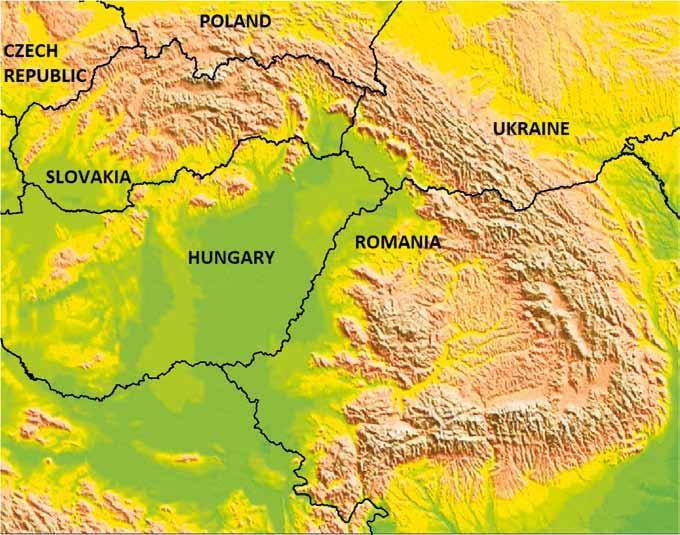
General information about the Romanian Carpathian Mountains
The Carpathian Mountains are Central Europe’s largest and highest range, stretching through Serbia, Romania, Ukraine, Poland, and Slovakia (whose Tatra Mountains hold the Carpathians’ highest peak).
On the map, the Romanian Carpathians form an arc around the Transylvanian plateau, creating natural borders for Romania’s three regions: Transylvania inside the arc, Wallachia to the south, and Moldova to the east, reaching the Prut River and the start of today’s Republic of Moldova.
These mountains and their foothills are grouped into three major sections.
Getting closer to the Romanian mountains or crossing them by car or train is not easy and you might want to read more about public transport in Romania. Your best bet is to get into the nearest largest city (Brasov, Sibiu, Timisoara or Cluj-Napoca) and prepare your trip from there.
Organising a hiking trip in different mountain groups of the Romanian Carpathians can also be a challenge. If you have less than 3 days, we recommend staying only in one. If you've got 3-5 days then you can do two, and if you have more than 5 days then you can plan for three.
In these mountains, you can also engage in activities such as horseback riding and wildlife watching. Keep in mind that the Rodna Mountains are the most untamed of them all.
The Western Carpathians
Located between Oradea, Cluj-Napoca and Deva in Western Romania, the Western Carpathian Mountains are medium-sized mountains with altitudes ranging between 1,200-1,800m. The highest altitude is reached at Vladeasa Peak at 1,836m in Vladeasa Massif.
Generally called the Apuseni Mountains, they're known for their picturesque sceneries dotted with mountain villages, numerous caves and high accessibility for tourists and hikers of all fitness and experience levels.
The Southern Carpathians
Stretching from Timisoara in the SW to Brasov in central Romania, the Southern Carpathian Mountains include the highest, wildest and most difficult and inaccessible mountains in Romania.
Reaching altitudes of 1,800 – 2,500m with many rocky trails, many glacial lakes, deep valleys and dense forests - the human population is sparse but wildlife is rich! Most trails are for hikers with a good physical fitness level, proper hiking gear and experience in the mountains.
The highest point in Romania is here at Moldoveanu Peak 2,544m in Fagaras Mountains, as well as the second highest, Negoiu Peak at 2,535m.
The Eastern Carpathians
Stretching from Brasov to Suceava in the North, the Eastern Carpathian Mountains are also pretty wild and probably the most underdeveloped for tourism and illegally exploited in our country.
With altitudes between 1,500 - 2,300m, popular mountain ranges include Calimani, Ceahlau and Rodnei Mountains in Bucovina.
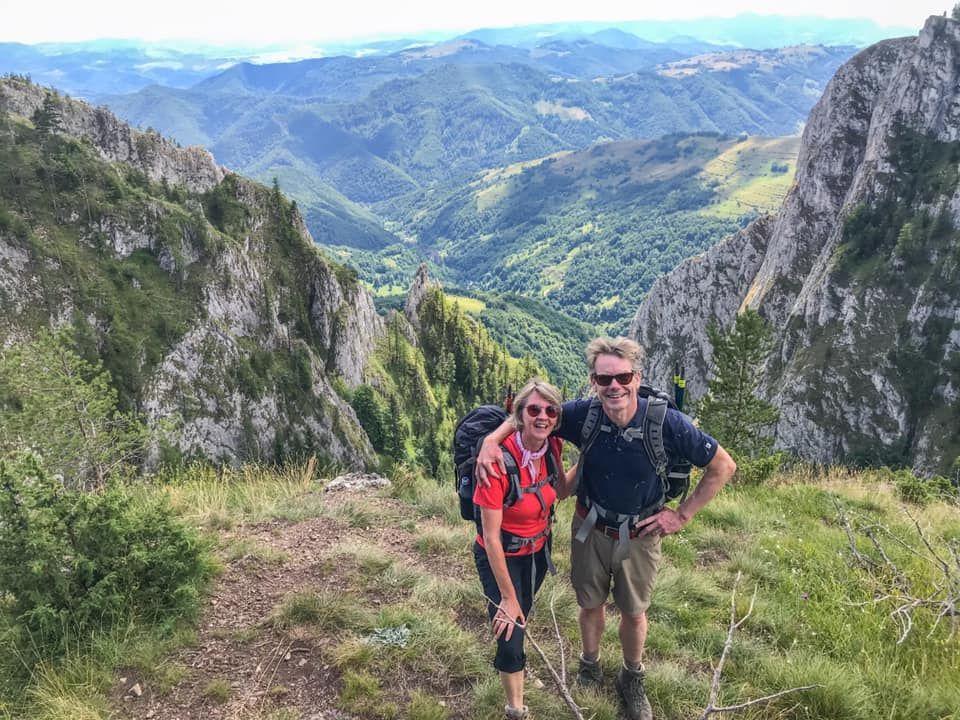
Happy hikers on one of our tours
What to expect in the Romanian Carpathians
All major mountain ranges have some key things in common that you must know about:
1. The Romanian Carpathians are very wild*
Meaning: sparsely populated, with dirt roads or largely inaccessible areas, poor phone reception, few mountain refuges, and abundant wildlife.
While small towns and mountain resorts at the foothills cater to casual hikers, venturing deeper into dense forests or higher altitudes reveals almost no signs of civilization.
These untouched areas are home to free-roaming chamois, deer, wild boar, wolves, lynx, bison, and brown bears, along with a rich diversity of smaller animals, birds, and plant species, including endangered ones.
That’s why there are 30 national parks in Romania most of them in the mountains, except for the famous Danube Delta by the Black Sea, which is also Europe's largest wetland and a UNESCO Biosphere Reserve.
Keep in mind that Romania's territory hosts 50% of the European brown bear population with an estimated count of 6,000. By comparison, the next country is Slovakia with an estimated count of 1,000 bears!
Local insight:Did you know Romania was named Europe’s last wilderness reserve and there are two documentaries about this: Wild Carpathia and Untamed Romania?

We organise safe wildlife tours with specialist guides
Brown bears are commonly seen near hiking trails, mountain huts, and campsites, often drawn by food or trash left behind by careless tourists.
This is why we strongly recommend hiking only with certified guides, like ours, who carry pepper spray and know how to handle bear encounters safely.
2. Tourist hiking infrastructure is underdeveloped*
Despite the Romanian Mountains' appeal and potential for tourism, local authorities are doing a very poor job of developing and expanding the infrastructure needed so more people can explore them in a safe and easier way.
Even if trails are generally well marked, there are few maps, manned mountain huts or refuges, especially at high altitudes.
And because of the low tourist numbers in the mountains, unless you're going during the weekend in a popular mountain range, don't expect to meet other fellow hikers on the trail.
So preparation is essential even if you’re only looking for easy trails or one-day hikes. In our article about hiking in Romania you’ll find more info about this. Or, save yourself the hassle of planning and go in the Romanian mountains with one of our certified guides.
3. You can’t do hut-to-hut hiking in Romania*
Whereas in other hiking destinations around the world hut-to-hut multi-day treks are quite common, because of the two reasons above hut-to-hut hiking trips in Romania are not possible. The only way to do this kind of hiking is on a camping expedition.
Most hiking trails are circuit and people go on one-day hikes and return to their starting point. Even if you stay overnight at a guesthouse or mountain hut, there are no other huts in the area you can get to.
However, when we plan a hiking trip for our clients we do our best to include hut-to-hut sections where possible, for example when crossing Bucegi Mountains from East to West.
4. Best time to go in the Romanian Carpathians*
From May to October, most medium-altitude mountains (up to 2,000 m) are accessible.
The Apuseni and Piatra Craiului Mountains can be explored year-round, offering trails for all fitness levels, experience, and weather conditions. In contrast, Bucegi, the Făgăraș range, and the Retezat Mountains are only reliably accessible in summer, once snow has melted above 2,200 m, unless you’re prepared for winter hiking.
Weekends, especially in summer, can get crowded, and high-mountain huts fill up quickly, so advance planning is key.
Knowing these practical details helps highlight the unique character of each range: the high, exposed trails of the Făgăraș Mountains, often called the Transylvanian Alps, contrast sharply with the winding, forested landscapes of the Apuseni or Ceahlău Mountains.
***
So now let’s have a look at the most popular Romanian Carpathians:
Fagaras Mountains
Located in central Romania, the Făgăraș Mountains are the highest part of the Southern range and among the country’s most visited thanks to their wild scenery and dramatic mountain peaks, despite difficult logistics and demanding hiking routes.
Their main highlight is the Transfăgărașan Road (open June–October), which climbs to Bâlea Lake, the largest glacial lake here and the starting point for the area’s key hiking trails.
Local tip:When Transfagarasan road is closed, there is a cable car going up to Balea Lake if approached from the North (Sibiu or Brasov); from Bucharest the road is closed and the only way to cross them is through the valley of the Olt River
With a surface 7.5 times larger than the nearby Bucegi Mountains, the Fagaras Mountains have eight peaks higher than 2,500 m which attract hikers from all over.
Highest peaks in Fagaras Mountains (also Romania's highest peaks)
The highest peaks in the Romanian mountains are Moldoveanu Peak at 2,544 m, and Negoiu Peak at 2,535 m, the second highest peak, both found in Făgăraș Mountains. Vânătarea lui Buteanu Peak at 2,507 m stands out with its rocky crest and is a little more accessible.
Other attractions in the Făgăraș range are the ruins of Poenari Castle, Stan’s Valley or Dambovicioara Cave.
These mountains are among the wildest in Romania, and their steep slopes, rocky peaks and deep valleys offer chances to spot wildlife. Maybe even golden eagles.
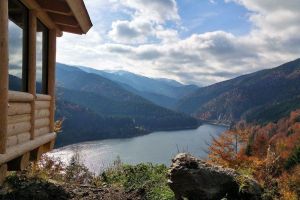
3-Day Hiking & Wildlife Trip at an Eco-Luxury Private Cabin in Fagaras Mts
Start from: Rucar, Arges county
With a conservation non-profit, we created Romania’s first volunteer trip that blends tourist activities (hiking and wildlife watching) with hands-on work at a traditional Transylvanian farm, in a tree nursery, and on wilderness conservation projects deep in the mountains. It’s a small-group trip with fixed departure dates, take a look:
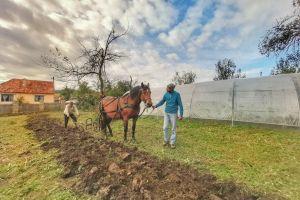
6-Day Volunteer Trip: Farm Life, Tree Nursery & Wildlife Conservation
Start from: Brasov
The nearby cities of Brașov and Sibiu are elegant bases for combining classic sightseeing with nature. Traveling by car gives you the best access to the main natural attractions.
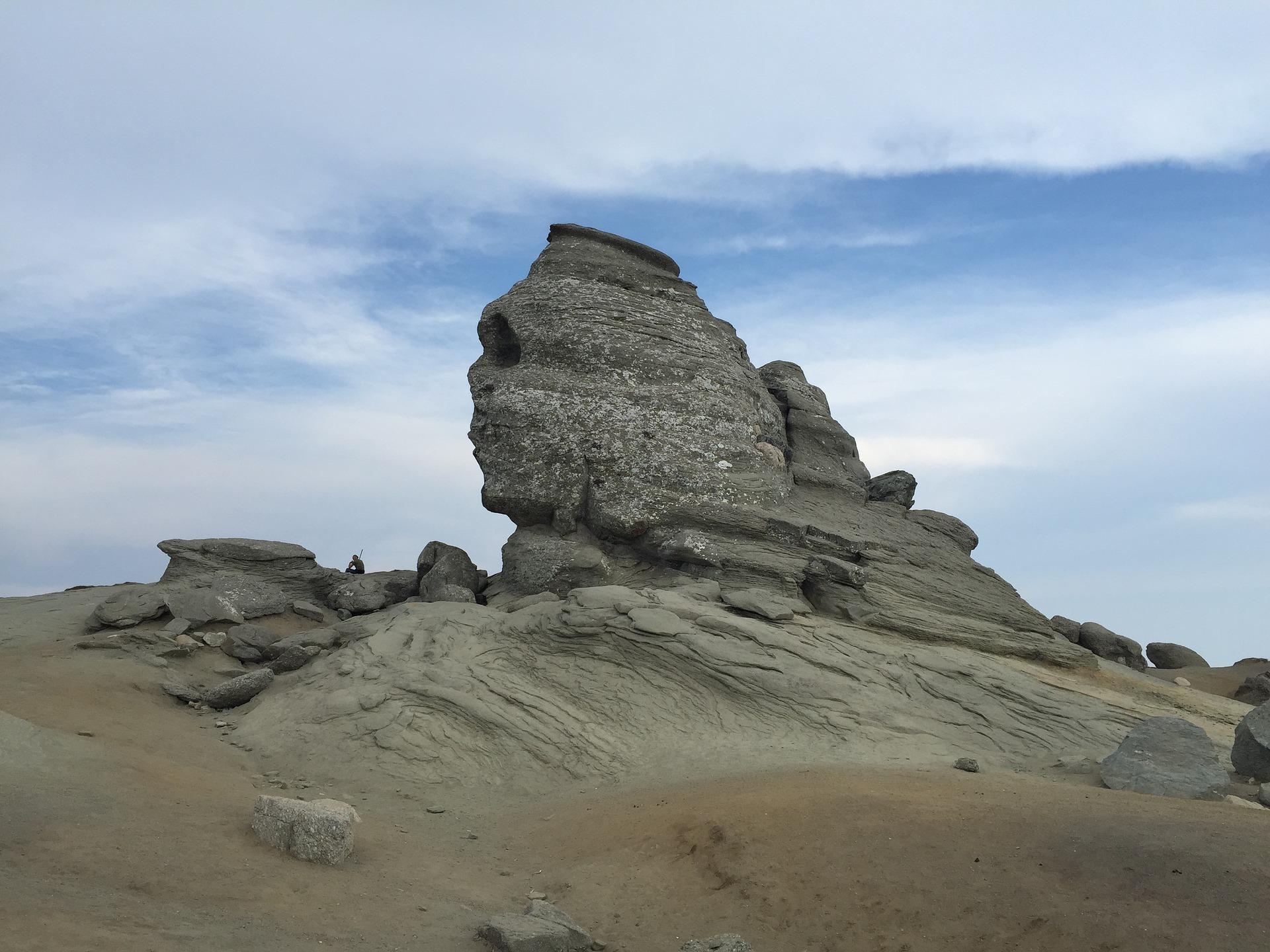
The Romanian Sphinx is a popular spot in Bucegi Mountains
Bucegi Mountains
The tourist gem of Prahova Valley, the Bucegi Natural Park is part of the Southern Carpathians of Romania. Bucegi Mountains host a range of trails, from the most accessible to the more challenging, longer ones. Most start from the small mountain resorts at the base which are quite accessible and frequented by lots of tourists.
The area’s main attractions are the Sphinx and Babele rock formations on the Bucegi plateau, reachable by cable car from Bușteni. Several easy trails start nearby, including the Urlătoarea Waterfall hike and the longer but gentle route to the Diham hut.
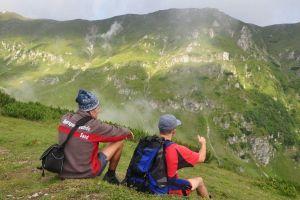
2 Day Hiking Trip in Bucegi Mts: The Sphinx & Omu Peak
Start from: Brasov or Sinaia or Busteni
Though highly accessible, the Bucegi Mountains are rich in wildlife, so caution and reliable information are essential. Beyond the well-known brown bears, you may encounter deer, wolves, black chamois, or even the elusive lynx.
Highest peak in Bucegi Mountains
Omu Peak is the highest point in the Bucegi at an altitude of 2,541 m and it ranks 11 on the list of Carpathian high altitudes and sixth among the Romanian Carpathian peaks. Up to 5 trails are leading up to it most of which are not recommended in winter. They vary in duration from 3 to 8 hours and go from accessible to complex.
If you're wondering what to do in Bucharest to get you closer to the great Romanian outdoors, Bucegi Mountains are your best choice.
You'll have the best time in resorts such as Busteni, Sinaia, Predeal, Bran and other nearby small villages most of which are accessible by train, bus and car.
A typical hike through picturesque mountain villages near Brasov
Piatra Craiului Mountains
Piatra Craiului National Park has been a protected area since 1938. Its narrow, saw-like limestone mountain ridges with a total length of 25 kilometers is unmistakable and freakin' impressive!
The most common activities in Piatra Craiului are trekking and mountain biking through the spectacular Zarnesti Gorges. The collapse of a cave roof led to the formation of a narrow limestone canyon we now know as the beautiful deep gorges of Zarnesti, a great place to see (and most hiking trails start through here) and take in the scenery as you walk on a dirt road.
A walk through the gorges will take you to the starting point for the trail leading up to Curmatura Hut. You will go through dense forests and mountain pastures. Although strenuous, this is one of the easy trails.
Highest peak in Piatra Craiului National Park
Most trails are medium-to-high difficulty. Those who want to cross the main ridge of Piatra Craiului, which is also the highest limestone ridge in the Carpathians, or reach its highest peak, La Om at 2,206m will need to be in good condition with their fitness and have the right technical skills for their hiking as some sections are rocky, exposed and quite dangerous.
Going on a trip in Piatra Craiului is one of the best things to do in Brasov, which is Romania's most popular tourist city. The famous Dracula Castle going by its real name, Bran Castle, is also nearby.
Retezat Mountains
Also part of the Southern Carpathians mountain range, the Retezat Mountains are home to the Retezat National Park, Romania's first national park. These mountains are so wild because they're inaccessible and unpopulated, there's not even a mountain hut here!
Over 185 species of birds and 55 species of mammals live here. The diverse scenery, with its glacial lakes, beautiful waterfalls, peaks, and gorges is simply incredible. True outdoor fans will love the Retezat Mountains - but they must be well prepared!
Highest peak in Retezat Mountains
Home to an extensive network of glacial lakes, one of the main attractions here is Bucura Lake a glacial lake spread over 8,9 hectares at an altitude of 2,030 meters. The Peleaga Peak, at an altitude of 2509 meters, is the highest here.
Despite Retezat Mountains being so popular, they're not very accessible for most people who don't have a very good fitness level or hiking experience. Add to this the fact that phone reception is very poor even if you have a good eSIM for Europe - so you've got to be well prepared.
But for those who do - this is one of the best places in Romania to plan a multi-day camping expedition. Our local guides will provide everything you need for this. And, anyway, there's no other accommodation option in the area and one-day hikes will be too short!
You can access Retezat National Park from Cheile Butii (Butii Gorges) and stay at the resort with the same name. Another popular entry point is Carnic. Both of these are accessible only by car though.
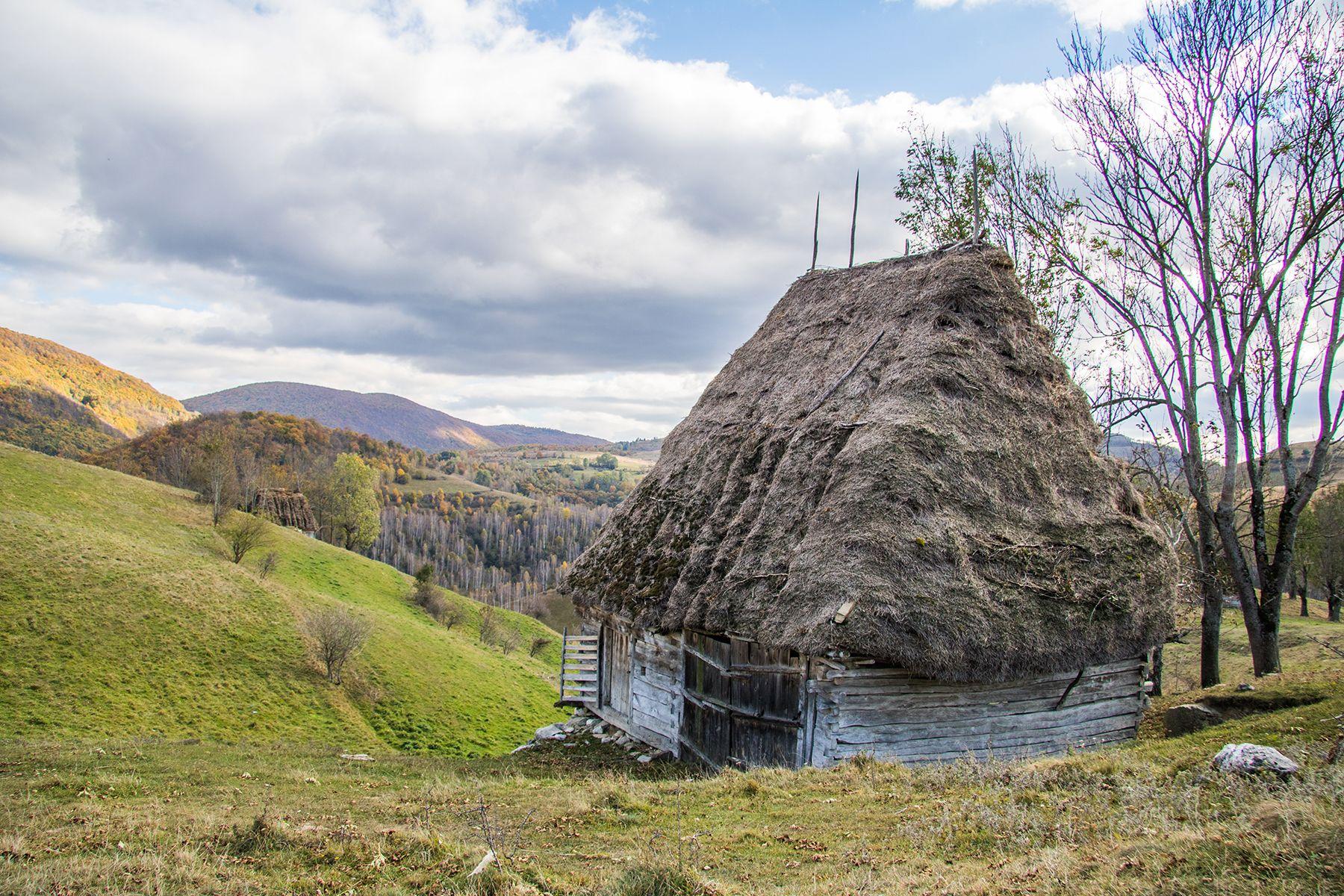
Typical sceneries in Apuseni Mountains
Apuseni National Park
Called by CNN one of the “best-kept secrets in Eastern Europe”, Apuseni Mountains are a charming tourist destination in the Western Carpathians for outdoor fans. They are most accessible from Cluj-Napoca, Romania's 2nd largest city and Transylvania's unofficial capital.
Hikers with a passion for geology will be fascinated by the karst formations, the deep valleys, gorges, and the karrens. In Apuseni National Park there are over 400 caves to explore, created long ago by underground river streams, with prehistoric human traces, Ice Age Animal fossils, and rare species of bat.
The Bears Cave, known for its 15,000-year-old bear fossils, and the Scărișoara Ice Cave, Romania's largest cave and southeastern Europe's second-largest underground glacier, and a great place for scientific research, are the most popular.
Various species of deer have their natural habitats in the Apuseni Mountains, like the roe deer (Capreolus capreolus), the chamois (Rupicapra rupicapra) and the deer (Cervus elaphus).
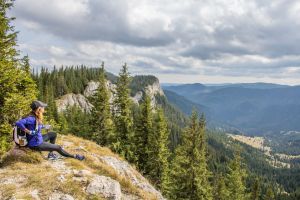
1 or 2-day Hiking Tour from Cluj: Wild Trails in Apuseni Natural Park
Start from: Cluj-Napoca
Highest peak in Apuseni National Park
With medium-altitude mountains reaching as high as 1,836m at Vladeasa Peak, this area is known for its picturesque valleys and traditional villages where friendly locals are ready to welcome you into their homes.
Many tourists appreciate the mountain villages in the region, offering a peek into the fascinating rural lives of mountain people in Romania. You can find room and board, observe traditions in the surrounding communities, and even participate in many of the activities people in the area still undergo to ensure their livelihood in the middle of nature.
This is an excellent destination for practicing sustainable tourism while experiencing a traditional lifestyle.
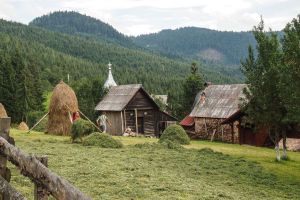
2 Day Hiking in Apuseni Natural Park: Culture & Local Life
Start from: Cluj-Napoca or Sibiu
A day trip into Apuseni Mountains is one of the most popular things to do in Cluj. This modern and vibrant city has much to offer tourists, from museums and fancy restaurants to some of the best festivals in Romania such as UNTOLD, Electric Castle or TIFF.
If you are in Bucharest these mountains are too far away for a one or two-day trip. So either you fly to Cluj and approach the mountains from here, or you go hiking somewhere closer such as the Bucegi Mountains.
Ceahlau Mountains
Bordered by the dramatic Bicaz Gorges and tranquil Bicaz Lake, the Ceahlău Mountains are the highest in Eastern Romania and a standout of the Eastern Carpathians.
Hikes here lead through lush forests, diverse flora, juniper-covered paths, and striking rock formations, with chances to spot rare plants like Edelweiss and the endangered Lady’s Slipper. Look, don’t pick! Most trails start near the towns of Durău and Ceahlău, where you’ll also find places to stay and eat.
Local legend adds mystery: at Mountain Stream Lake, the 26-meter Devil’s Rock is said to move when no one is watching. Failed climbing attempts and the metal crosses around it only deepen the eerie reputation. Be sure to see this natural (and supernatural) landmark.
Highest peak in Ceahlau Mountains
Its most prominent peaks are Ocolasu Mare at 1907 meters and Toaca at 1904 meters high.
Despite the general notion that these trails are accessible, you must be in good physical condition, as some may prove strenuous. Locals practice religious pilgrimages up the mountain, going past Fantanele Hut to Dochia Hut and spending the night at the religious edifice on the plateau.
Another popular attraction is the Duruitoarea waterfall which at 25 meters high is very impressive. A local recommendation is to see the waterfall when returning from Dochia. Going up the very high and steep rocky steps can be horrible for your knees. Other important attractions are the Red Lake, and the Hășmașul Mare Massif.
Its location in the northeast makes the average temperature lower all year round in this mountain group compared to the other mountains of Romania. So, make sure to keep an eye on weather conditions constantly and be well-equipped!
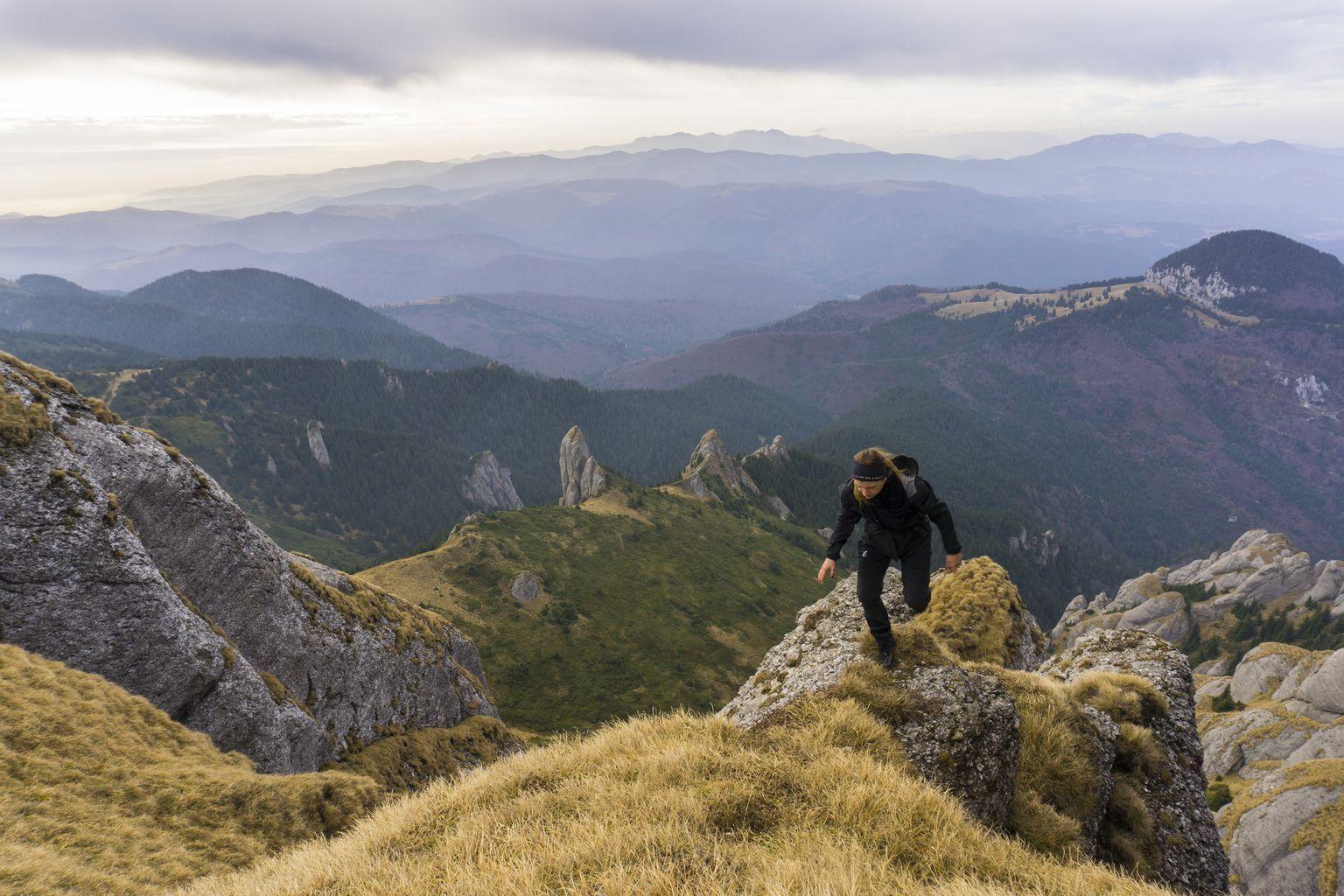
One of Romania's mountains best kept secrets
Ciucas Mountains
Close to Brasov, the Ciucaș Mountains are part of the Eastern Carpathians and can be seen looking East from the Bucegi Mountains. They are seen as part of the Curvature Carpathians, and their scenery is unique.
This mountain range is spectacular with hiking routes open all year long making it perfect for climbing, hiking, and mountaineering.
Highest peak in Ciucas Mountains
Ciucaș Mountains soar up to 1,954 m at Ciucaș Peak, but several trails remain accessible, making one-day hikes from Bucharest or Brașov possible even for beginners.
This area is a gem for geology lovers, with striking karst formations shaped by wind and rain. Locals have given them colorful names:
- “Babele la sfat”- old women having a chat
- “Mana Dracului” - the Devil’s Hand
- “Goliat’s Tower”
- “Tigaile Mari si Mici” - big (cooking) pans and small pans
Most of the 12 trails start from Cheia Mountain Resort, reachable only by car. Short enough for families, the best mountain views are at sunrise or sunset, so staying overnight at Ciucaș Mountain Hut is ideal.
For more comfort, Brasov is the closest city for combining Carpathian adventures with modern amenities.
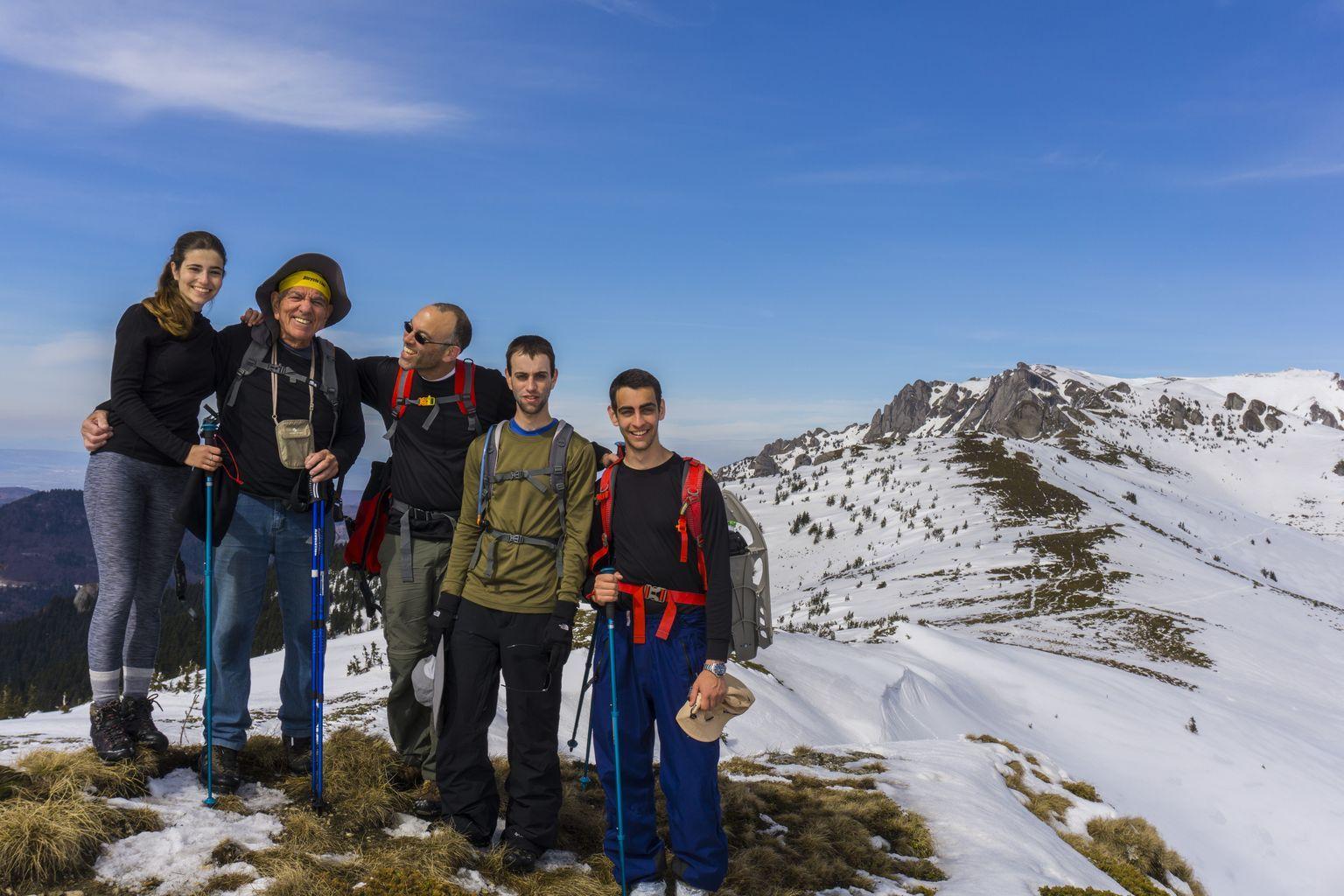
A family of hikers on one of our tours
Conclusion
The mountains of Romania, though mostly unknown as a tourist destination, will impress nature enthusiasts from around the world. From Apuseni Mountains in the West, Ceahlau Mountains in the East, or Făgăraș Mountains in the South, I hope I was able to show you how each mountain range has its own allure.
But before you start planning to travel to Romania remember the things that make the Romanian mountains unique: their wilderness.
So, ready to explore?
Your Romanian Friend,
Elena
